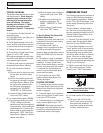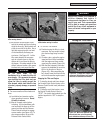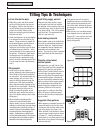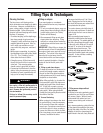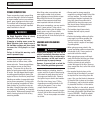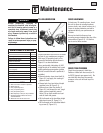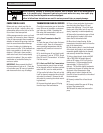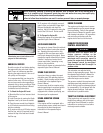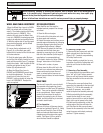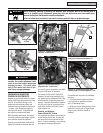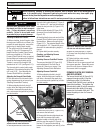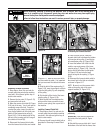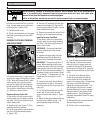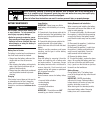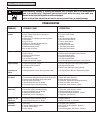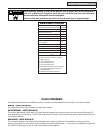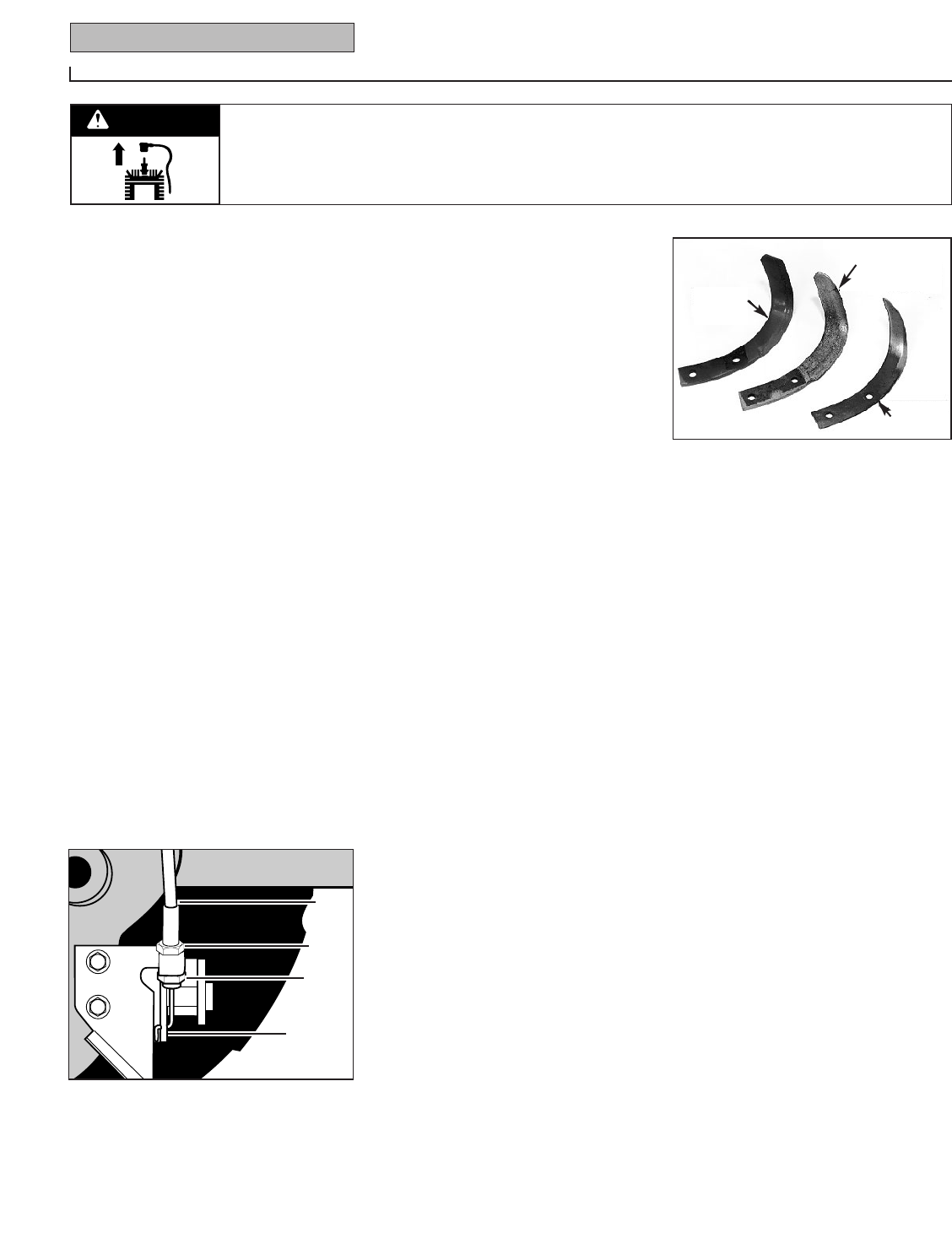
20 Section 5: Maintenance
Before inspecting, cleaning or servicing the machine, shut off engine, wait for all moving parts to
come to a complete stop, disconnect spark plug wire and move wire away from spark plug.
Remove the key from the keyswitch on units so equipped.
Failure to follow these instructions can result in serious personal injury or property damage.
WARNING
WHEEL GEAR CABLE ADJUSTMENT
When the Wheel Gear Lever is in DISEN-
GAGE, the wheels will roll freely (free-
wheel). The wheels should not roll freely
when the lever is in ENGAGE. If the
wheels roll freely when the Wheel Gear
Lever is in ENGAGE, the wheel gear cable
needs to be adjusted as described below.
1. With the engine shut off and the spark
plug wire disconnected, put the Wheel
Gear Lever in ENGAGE.
2. Loosen the top adjustment nut (A,
Figure 5-4) on the wheel gear cable
bracket that is located on the left side rear
of the transmission.
3. Push the wheel gear cable (B) down
and roll the tiller slightly forward or back-
ward until the eccentric lever (C) engages
(locks) the wheels. Hold the cable in that
position and tighten the top (A) and
bottom (D) adjustment nuts.
4. Move the Wheel Gear Lever to
ENGAGE and DISENGAGE several times
to check the adjustment. The wheels
should not roll when the lever is in
ENGAGE, but they should roll when the
lever is in DISENGAGE. Readjust the
cable as required.
OFF SEASON STORAGE
When the tiller won’t be used for
extended periods, prepare it for storage
as follows:
1. Clean the tiller and engine.
2. Do routine tiller lubrication and check
for loose parts and hardware.
3. Protect the engine and perform recom-
mended engine maintenance by following
the engine storage instructions found in
the separate Engine Owner’s Manual.
NOTE: Be sure to protect the fuel lines,
carburetor and fuel tank from gum
deposits by removing fuel or by treating
fuel with a fuel stabilizer (follow engine
manufacturer’s recommendations).
4. On electric start units, follow “Battery
Storage” instructions in this Section.
5. Store unit in a clean, dry area.
6. Never store the tiller with fuel in the
fuel tank in an enclosed area where gas
fumes could reach an open flame or
spark, or where ignition sources are
present (space heaters, hot water heaters,
furnaces, etc.).
BOLO TINES
The tines will wear with use and should
be inspected at the beginning of each
tilling season and after every 30 operating
hours. Tines can be replaced individually
or as a complete set. Never inspect or
service the tines unless the engine is
stopped, the spark plug wire is discon-
nected, and the ignition key is removed
on electric start models.
A. Tine Inspection:
With use, the tines will become shorter,
narrower and pointed (Figure 5-5). Badly
worn tines will result in a loss of tilling
depth and reduced effectiveness when
chopping up and turning under organic
matter. Use Figure 5-5 as a guide to
when the tines should be replaced.
B. Removing a Single Tine:
1. Remove the two screws and nuts that
attach a single tine to the tine holder
(Figure 5-6). If needed, use penetrating
oil to help free the nuts.
2. When installing a single tine, be sure
to position it so that its cutting edge will
enter the soil first as the tiller moves
forward.
C. Removing a Tine Assembly:
1. If removing both tine assemblies, mark
them “left” and “right” before removal.
Doing so will help ensure that the assem-
blies are reinstalled on the correct sides
of the tiller.
2. Remove the screw and locknut that
secure the tine assembly to the tine shaft
(Photo 5-7). Pull the tine assembly off
the shaft (if necessary, use a rubber
mallet to tap the tine assembly outward).
3. Before reinstalling the tine assembly,
inspect the tine shaft for rust, rough
spots or burrs and file or sand as needed.
Apply a thin coat of grease to the shaft.
4. Install each tine assembly so that the
cutting edge of the tines will enter the
soil first when the tiller moves forward
.
Secure the tine assembly to the tine shaft
using the screw and locknut previously
removed. Tighten securely.
Figure 5-4: Wheel gear cable assembly.
B
A
C
D
Figure 5-5: Checking tines for wear.
New
Tine
Replace
Moderate Wear



